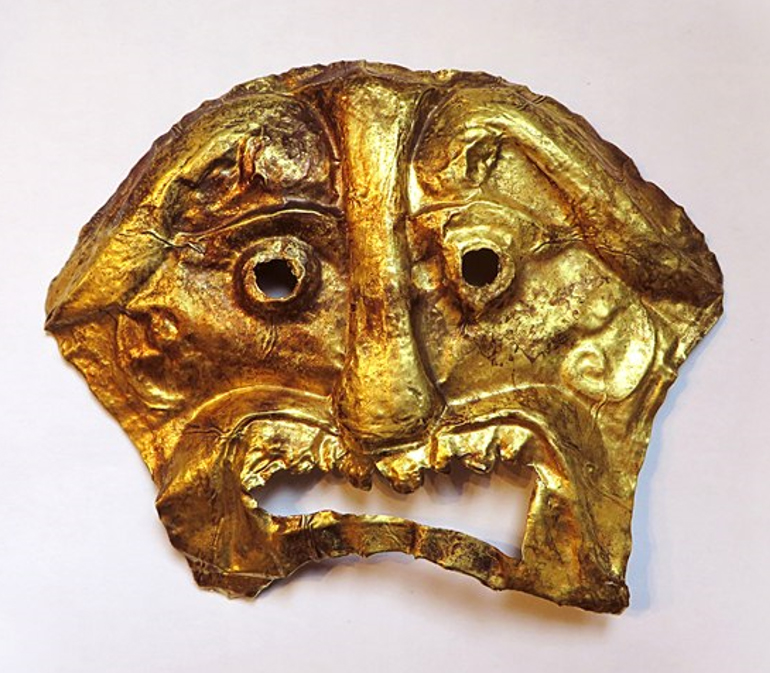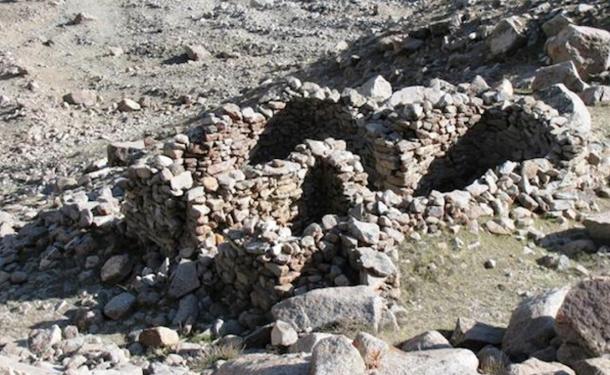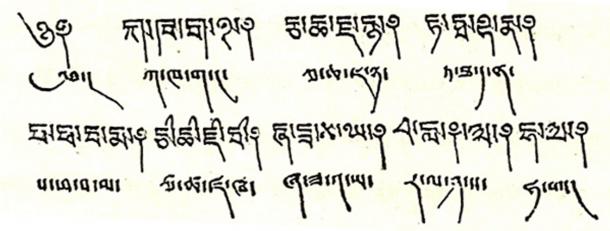
John Vincent Bellezza, a senior research fellow with the Tibet Center of the University of Virginia, has been studying the archaeology of the Iron Age people of western Tibet and their gods and cultures for more than 25 years.
His blog states: "Until the author's [Professor Bellezza's] intensive exploration of Upper Tibet in the 1990s and 2000s, very little was known about Zhang Zhung. The Tibetans themselves had forgotten what they had once achieved and the Chinese Communists were unaware of what lay on the extremes of the Plateau."

An astounding ensemble of monuments heralds the existence of Zhang Zhung from circa 1000 BC. Castles occupied the high ground around agricultural settlements, temples were founded in hidden nooks and tombs dotted uninhabited tracts. Many of the fortresses and temples were entirely built of stone using heavy rock members to support the roofs.In an e-mail to Ancient Origins, Professor Bellezza wrote: "There was both herding and farming in ancient western Tibet. A wide range of artifacts have been recovered from tombs in recent years and others have appeared in the international art and antiquities market. Everything from precious stones to a variety of metals worked and molded to ceramics, wooden objects, silk and woolen textiles."
Upper Tibet is home to lavish artistic tableaux, illustrating the everyday realities of life in Zhang Zhung. Throughout this sprawling land, rock carvings and rock paintings adorn the walls of cliffs and caves. This art chronicles battles, sporting contests, hunting, herding, and religious pursuits in graphic detail. No other discovery portrays Zhang Zhung in such a vivid and intimate way.
In his blog, Professor Bellezza wrote that the memory of Zhang Zhung has been preserved in legends, myths and even histories, giving a picture of their society and culture. "They document the construction of castles, temples, tombs, irrigation systems and workshops," he wrote. "...While the elite resided in substantial strongholds dispersed all around Zhang Zhung, the herders and farmers occupied much more humble dwellings. Nevertheless, clan and ritual ties joined the various levels of society together into a potent confederation which prevailed for centuries."
The Iron Age Zhang Zhung's gods are still remembered in Tibet's Bon religion of later years. Professor Bellezza's description, at this entry at his blog Tibetan Archaeology, of the coming into being of their great god, Gekhoe, is well worth reading:
Bon scriptures state that in the emptiness of space, Gekhoe arose from a resplendent jeweled egg. This marvelous egg began its descent to earth through the agency of the lha of bright light, a primordial being. Then, mingling with the radiance of the father mountain and mother lake, it hatched. From this magical egg sprung Gekhoe, sovereign of the land, in the form of a fierce wild yak of existence. This divine crystal yak landed in the country of Zhang Zhung behind "Great Snow Mountain". At that time, the earth quaked in six different ways and the swirling ocean was upset. Thereafter, in the sky, there appeared a brilliant light, melodious sounds in space, and beautiful flowers and many other wonderful occurrences on earth. Rocks on the summit of Great Snow Mountain fell down upon the fiery horns of Gekhoe and he tossed them to the right and left with their tips. It is said that even today the horn-prints and hoof-prints of Gekhoe can be seen on those rocks. In the final stage of the theogony, the great wild yak of existence was transformed into light and dissolved into Great Snow Mountain, thence to appear again in myriad forms.He wrote in an e-mail to Ancient Origins that a creator being born from an egg is a common motif in mythology. Gekhoe is still part of the Bon pantheon.
"He is an important tutelary god in that religion and often appears in the form of a tantric deity with 18 arms," Professor Bellezza wrote in e-mail. "His consort is Drablhai Gyalmo, once an important deity in western Tibet in her own right. She is often in the guise of a female warrior. Monster slaying is another one of those mythemes that cuts across many cultures. It is very difficult to say when this form of divinity arose but it was early on in human history."
Professor Bellezza says in the religion now called the Eternal Bon, Gekhoe was king of the gods and watched over all the humans and creatures in western Tibet. He ruled over many spirits, some very powerful, others less so. Gekhoe translates from Zhang Zhung language as "Demon Destroyer". But while the kingdom of Zhang Zhung dates from 500 BC, the texts describing Gekhoe are no older than 1,000 years, around the end stage of when the older religion was subsumed into Buddhist concepts and principles.
However, Professor Bellezza went to a prehistoric settlement of stone dwellings that he thinks was the place where the Zhang Zhung believed that Gekhoe descended to the Earth. The residential complex appears to have had utilitarian and religious functions, he writes. The origins of the settlement are lost in history. They are preserved in neither literary nor oral traditions of Eternal Bon religion. The settlement has 17 all-stone corbelled buildings of a type of construction in use in Upper Tibet in the first millennium BC, though the precise date of its founding is not known.
The structures are 5,130 to 5,250 meters above sea level—at least 16,800 feet. This is above the height that humans can live comfortably. They could live there during the Iron Age because the climate was milder and because the people were vigorous and technologically capable, the professor wrote.
This settlement and the Zhang Zhung in general succumbed to climate change and environmental degradation, Professor Bellezza writes. "While the Zhang Zhung civilization has long since vanished, some of its fundamental premises still hold sway in the hearts of Tibetans. The implication here is resoundingly clear: the human spirit and what it holds dear never die."
Professor Bellezza wrote extensively about Gekhoe in his books Calling Down the Gods (2005) and Zhang Zhung (2008).




Reader Comments
to our Newsletter